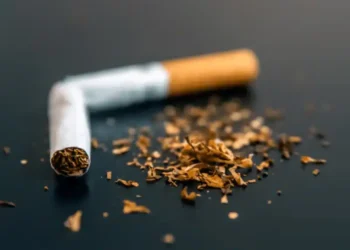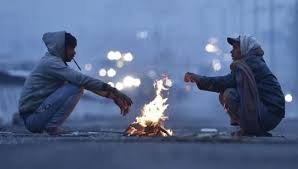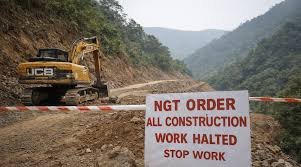Modi 3.O: On June 9, Narendra Modi was sworn in as prime minister for the third time in a row. 71 other ministers swore in tandem with him. Thirty were sworn in as Ministers of Cabinet, five as Ministers of State (Independent Charge), and the remaining thirty as Ministers of State. State politics and caste equations have also been addressed in this Narendra Modi ministry.
The most number of 27 Members of Parliament from Other Backward Classes (OBC) were sworn in as ministers in the Modi administration. Two ministers have been appointed concurrently from the Extremely Backward Classes (EBC) category. The general voter base, which is the backbone of the BJP, has a sizable percentage as well. The general category has produced 28 ministers. Five ministers are from Scheduled Tribes and ten are from Scheduled Castes (SC).
Which caste got how many ministerial posts in the general category
There are 28 ministers in the Modi 3.O cabinet that are appointed from the general category. Of these, Brahmins (eight), Rajputs (three), Bhumihars, Jats, Marathas, and Vokkaligas (two each) have produced the most number of ministers.
Regarding other castes, one minister has been appointed from the Karnataka Lingayat group, Nishad, Lodh, and Mahadalit class. Each of the Bengali communities of Matua, Gurjar, Khatik, and Bania has produced a minister. There are now two ministers from the Yadav community.
Which state got how many ministerial posts
The Modi 3.O government has also taken state politics into account. Uttar Pradesh, the state with the most Lok Sabha seats, has produced ten ministers. Among these ministers are RLD leader Jayant Chaudhary and Apna Dal (Sonelal) chief Anupriya Patel, along with Rajnath Singh, Jitin Prasad, Pankaj Chaudhary, Kamlesh Paswan, SP Singh Baghel, BL Verma, and Kirtivardhan Singh.
With regard to ministerial posts, Bihar comes in second. Bihar has produced eight ministers in all. As ministers, the BJP’s Giriraj Singh, Nityanand Rai, Satish Chandra Dubey, and Rajbhushan Chaudhary, the JDU quota’s Lallan Singh, the son of former chief minister Bharat Ratna Karpuri Thakur, the LJP’s Chirag Paswan (Ram Vilas Paswan) quota, and the HAM Party’s Jitan Ram Manjhi have all been appointed.
Also Read: Narendra Modi takes oath for the 3rd term; equals Jawahar Lal Nehru’s feat
6 ministers from Maharashtra and four from Gujarat
With 48 Lok Sabha seats, Maharashtra has produced 6 ministers. The BJP’s Nitin Gadkari, Piyush Goyal, Muralidhar Mohol, and Raksha Khadse, the Shiv Sena’s Pratap Rao Jadhav, and the RPI (A)’s Ramdas Athawale are among those who have been appointed as ministers. Gujarat has produced four ministers and has 26 Lok Sabha seats. Ministers Amit Shah, CR Patil, Mansukh Mandaviya, and Nimuben Bambhaniya are among those who have been appointed.
Five ministers from Madhya Pradesh and four from Rajasthan
In Madhya Pradesh, the BJP has secured all 29 Lok Sabha seats. Five of the BJP’s ministers are from this area. Virendra Kumar, Durgadas Uike, Savitri Thakur, Jyotiraditya Scindia, and Shivraj Singh Chauhan are a few of the people who have become ministers. The four ministers from Rajasthan are Jat face Bhagirath Chaudhary, Bhupendra Yadav, Arjun Ram Meghwal, and Gajendra Singh Shekhawat.
Four ministers from Karnataka, three each from Odisha and Haryana have been made ministers
Karnataka has been represented by four ministers. Ministers have been appointed by the JDS’s HD Kumaraswamy and the BJP’s Prahlad Joshi, Shobha Karandlaje, and V Somanna. The cabinet comprises Dharmendra Pradhan, Jual Oram, Ashwini Vaishnav, and former chief minister Manoharlal Khattar from Odisha, Rao Indrajit Singh from Haryana, and Krishanpal Gurjar from Haryana.
Two ministers each were made from West Bengal, Assam and Telangana and three from Andhra Pradesh.
The BJP’s Raju Srinivas Verma and the TDP’s Dr. Chandrashekhar Pemasani and Rammohan Naidu have been appointed as ministers in the Modi 3.O cabinet. Other new members include Sarbananda Sonowal and Pabitra Margherita from Assam, G Kishan Reddy and Bandi Sanjay from Telangana, and Shantanu Thakur and Sukanta Majumdar from West Bengal.
In addition to Suresh Gopi, who achieved the first-ever lotus bloom in Kerala, the cabinet also included George Kurien, Annapurna Devi, and Sanjay Seth from Jharkhand, as well as Ravneet Singh Bittu and Hardeep Singh Puri from Punjab.
These states got one ministerial post each
Ajay Tamta from Uttarakhand, Kiren Rijiju from Arunachal Pradesh, JP Nadda from Himachal Pradesh, Jitendra Singh from Jammu and Kashmir, L Murugan from Tamilnadu, Tokhan Sahu from Chhattisgarh, and Harsh Malhotra from Union Territory Delhi were appointed as ministers in the Modi 3.O cabinet.
How much space did half of the women population get in the Modi cabinet?
In the Modi administration, half of the female population holds seven ministerial positions. Women are become a quiet voting bloc for PM Modi. Among the female ministers in the Modi administration are Nirmala Sitharaman, Anupriya Patel, Annapurna Devi, Shobha Karandlaje, Raksha Khadse, Savitri Thakur, and Nimuben Bambhania.













